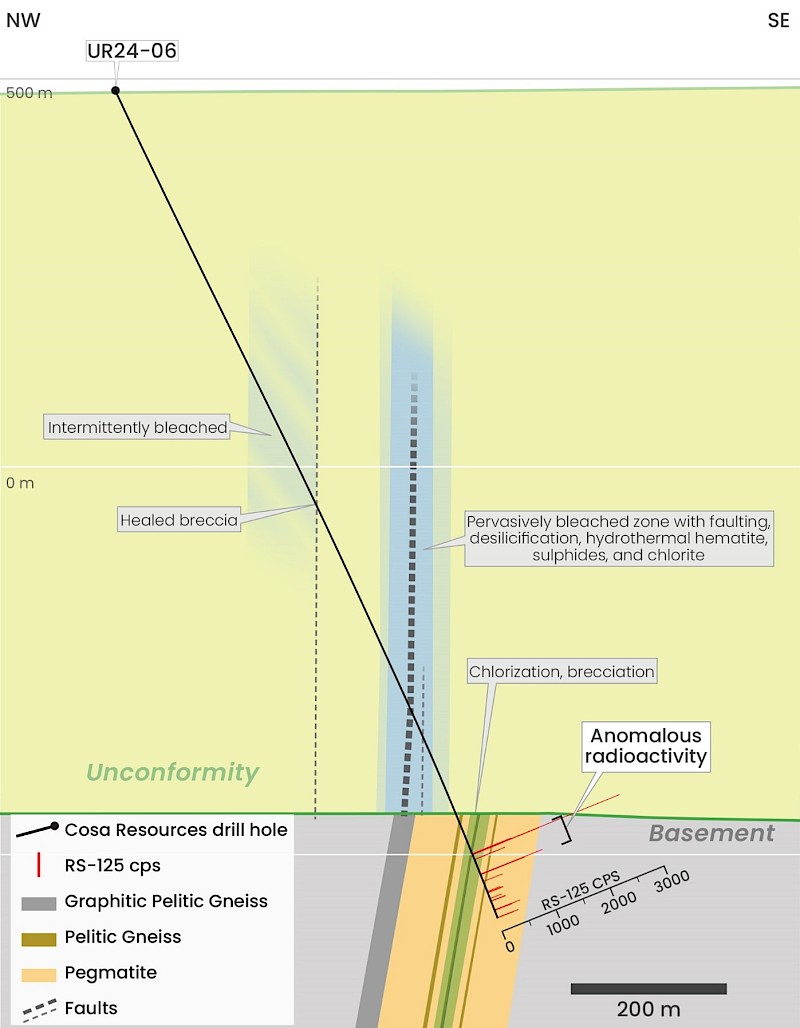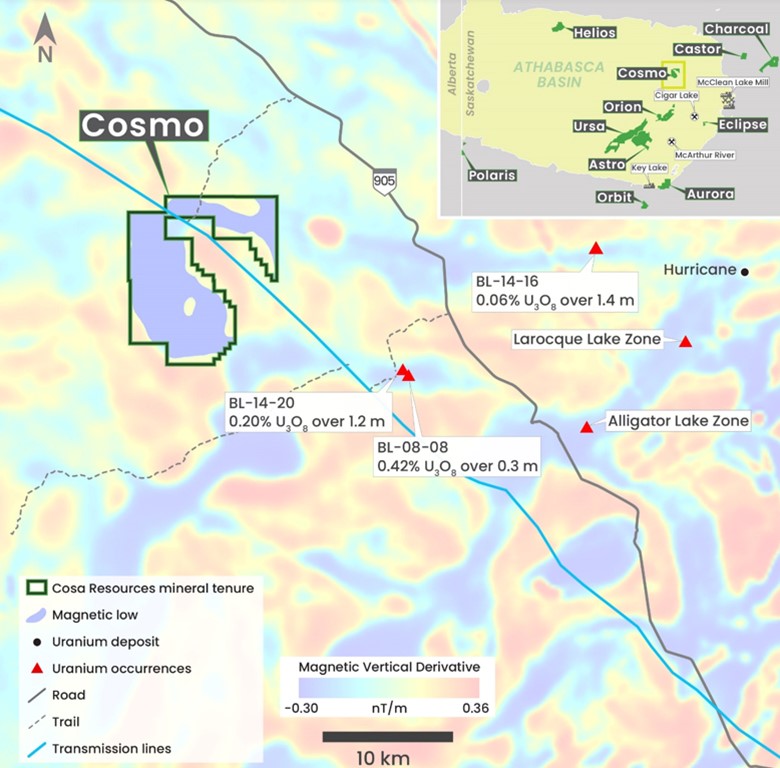Located 45 kilometres west of the McArthur River mine and over 60,000 hectares in size, Ursa captures more than 60 kilometres strike length of the Cable Bay Shear Zone, a structural corridor with several known uranium occurrences and potentially the last remaining eastern Athabasca corridor to have not yet yielded a major uranium discovery.
Drilling during Cosa’s recent summer campaign successfully identified a new zone of basement-hosted radioactivity within a broader interval of hydrothermal alteration in the basement and lower sandstone. The Company believes that the work completed to date, including deployment of Ambient Noise Tomography (ANT) over much of the Kodiak trend, has significantly upgraded the project by identifying several anomalies that are similar to what was targeted where the company intersected radioactivity. With no drilling within roughly two kilometres of the radioactive intercept, Cosa’s technical team is eager to return to Ursa for follow up work.
Figure A – Ursa Property

Drill hole UR24-06 pictured below was the first drill hole to test only an initial ANT target area during the recent summer drill program. The drill hole intersected a broad zone of unconformity-model type sandstone structure and alteration near the unconformity which may represent a very compelling follow up drill target pending receipt of uranium assay.

Drill hole UR24-04, pictured, below, targeted the down dip extension of sandstone hosted structure, alteration, and uranium geochemistry intersected by drill hole UR24-03. UR24-04 undershot the optimum target by approximately 50-metres however the drill hole successfully intersected a significant basement conductor at depth characterized by decimetre- to metre-scale zones of sub massive graphite mineralization, a critical indicator of structural displacement and hydrothermal activity within the Athabasca Basin.

The combined results of UR24-04 and UR24-06, spaced roughly nine kilometres apart, demonstrate that the Kodiak trend appears to have all of the necessary ingredients to form a major unconformity style uranium deposit, and the Company believes that this drill program has significantly advanced the Ursa project as a whole.








